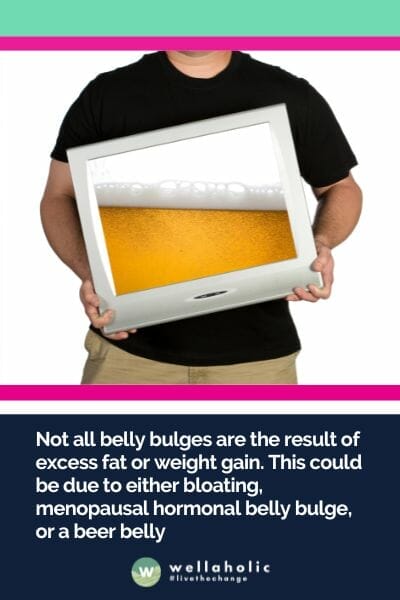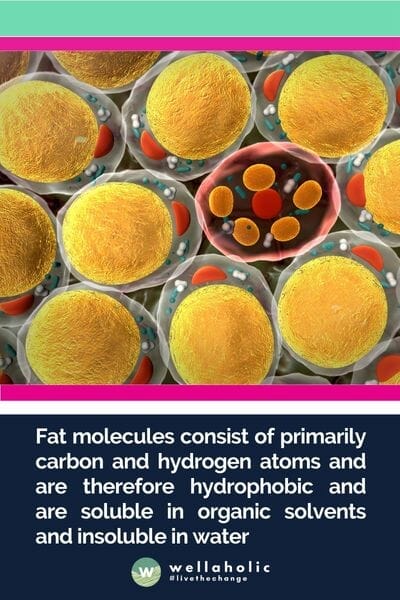
Slim Down in Singapore: Proven Tips for Sustainable Weight Loss

From Chubby to Chic: Slimming Down in Singapore
Discover effective ways to achieve your body goals in the Lion City!
Key Benefits of Our Slimming Treatments:
- ✅ Non-invasive procedures
- ✅ Targeted fat reduction
- ✅ Improved body contour
- ✅ Boosted confidence
Did You Know? 🤔
Over 60% of Singaporeans are actively trying to lose weight!
Our Popular Slimming Treatments:
- 🔥 WellaFreeze™ Fat Freezing
- 🔥 WellaShape™ Body Contouring
- 🔥 Ultrasonic Cavitation
Start your journey to a slimmer, more confident you with Wellaholic’s expert treatments!

Introduction: Why Singaporeans are Gaining Weight and the Importance of Slimming Down
Singapore is a food paradise, but it’s also a place where staying fit can feel like an uphill battle.
With hawker centers brimming with calorie-laden delights and a fast-paced lifestyle that leaves little time for exercise, it’s no wonder many of us struggle with weight loss. But don’t worry—slimming down in Singapore is entirely possible with the right strategies. Whether you’re looking to shed a few kilos or embark on a complete transformation, we’ve got you covered.
In this guide, we’ll explore practical tips, local insights, and effective treatments to help you achieve your weight loss goals sustainably.

Why Is Weight Loss Challenging in Singapore?
Let’s face it—temptation is everywhere. From fragrant chicken rice to buttery kaya toast, Singapore’s culinary scene is both a blessing and a challenge. Add long work hours and sedentary commutes into the mix, and it’s easy to see why slimming down can feel daunting.
But here’s the good news: With small, consistent changes to your diet, exercise routine, and mindset, you can overcome these challenges and achieve lasting results.
“Small changes can make a big difference – take the first step towards achieving your slimming goals in Singapore!”

1. Smart Diet Swaps: Enjoy Local Food Without the Guilt
You don’t have to give up your favorite dishes to lose weight. The key is moderation and making smarter choices.
Healthy Hawker Food Options
- Swap fried carrot cake for steamed fish soup.
- Choose yong tau foo with clear soup over laksa or mee goreng.
- Opt for brown rice instead of white rice when ordering mixed vegetable rice.
Portion Control Tips
- Share large portions with friends or family.
- Avoid sugary drinks like teh tarik or Milo Dinosaur—stick to plain water or unsweetened tea.
Meal Prep Ideas
If you’re too busy to cook daily, consider meal prep services like Grain or FitThree that offer calorie-controlled meals tailored to your goals.
The obesity rate among children and adolescents varied widely between the high of 16.3% in New Zealand, followed by 14.1% in Brunei Darussalam, and the low of 1.7% and 2.0% in Nepal and India respectively.

2. Exercise Made Simple: Stay Active in a Busy City
You don’t need hours at the gym to stay fit. Even small bursts of activity can make a big difference.
Quick Workouts for Busy Professionals
- Try a 20-minute HIIT session at home using free apps like Nike Training Club.
- Take brisk walks during lunch breaks or after dinner. Aim for at least 10,000 steps daily.
Affordable Fitness Options
- Explore free fitness classes at community centers.
- Join the National Steps Challenge by HPB to stay motivated (and earn rewards!).
Outdoor Activities
Singapore’s parks are perfect for staying active. Go cycling at East Coast Park or hiking at MacRitchie Reservoir for a fun weekend workout.

3. Build the Right Mindset: Stay Motivated
Weight loss isn’t just about what you eat or how much you exercise—it’s also about your mindset.
Set Realistic Goals
Instead of aiming to lose 10kg in a month, focus on losing 0.5–1kg per week. Slow and steady progress is more sustainable.
Track Your Progress
Use apps like MyFitnessPal to log your meals and workouts. Seeing your progress can keep you motivated.
Celebrate Small Wins
Lost 2kg? Treat yourself—not with food but maybe with new workout gear or a relaxing massage.

4. Explore Non-Invasive Slimming Treatments
If you’re looking for an extra boost in your weight loss journey, non-invasive slimming treatments can help target stubborn fat areas effectively.
Wellaholic’s Award-Winning Slimming Treatments
At Wellaholic, we offer science-backed treatments designed to complement your weight loss efforts:
- WellaCavi™ Ultrasonic Cavitation: Breaks down fat cells using ultrasound technology.
- RF Body Sculpting: Tightens loose skin while reducing fat.
- Laser Lipo: A safe and painless way to target fat deposits.
These treatments are non-invasive, require no downtime, and are perfect for busy individuals who want visible results without surgery.

5. Common Weight Loss Mistakes (and How to Avoid Them)
Even with the best intentions, it’s easy to fall into common traps when trying to slim down:
- Skipping Meals: This slows down your metabolism and makes you more likely to overeat later.
- Solution: Eat smaller meals throughout the day to keep your energy levels stable.
- Over-relying on Exercise: You can’t out-exercise a bad diet.
- Solution: Focus equally on nutrition and physical activity.
- Expecting Instant Results: Weight loss takes time—be patient with yourself!
6. Success Stories from Wellaholic Clients
Many of our clients have achieved incredible transformations through our holistic approach to slimming. Here’s one inspiring story:
“I was skeptical at first but decided to try Wellaholic’s WellaCavi™ treatment along with some diet changes. In just three months, I lost 8kg! The team was so supportive throughout my journey.” – Michelle T.
Want to be our next success story? Let us help you achieve your goals! Losing weight in Singapore doesn’t have to be overwhelming. By making small lifestyle changes and exploring effective treatments like those offered by Wellaholic, you’ll be well on your way to achieving your dream body.

Wellaholic’s Professional Observations on Slimming Down in Singapore
In our personal experience with customers at Wellaholic, we have observed a few interesting points when it comes to weight management and achieving a healthy lifestyle in Singapore.
Firstly, many individuals struggle with finding a balance between indulging in Singapore’s delicious local cuisine and maintaining a calorie-controlled diet. While dishes like nasi lemak, laksa, and char kway teow are undoubtedly delicious, they can be high in calories and unhealthy fats. We often guide our clients towards making mindful choices, such as opting for smaller portions, choosing healthier cooking methods like grilling or steaming, and incorporating more vegetables into their meals.
Secondly, we’ve noticed that a sedentary lifestyle is a significant contributor to weight gain among Singaporeans. Long working hours and a reliance on private transportation can lead to a lack of physical activity. To combat this, we encourage our clients to incorporate simple yet effective exercises into their daily routines, such as taking the stairs instead of the elevator or going for a brisk walk during lunch breaks.
Lastly, we’ve found that many individuals struggle with maintaining motivation and consistency when it comes to their weight loss journey. It’s not uncommon for people to experience plateaus or become discouraged by slow progress. In such cases, we work closely with our clients to set realistic goals, celebrate small victories, and provide ongoing support and encouragement. We believe that a positive mindset and a sustainable approach are key to achieving long-term success.
Frequently Asked Questions (FAQ)
Q: What is the recommended rate of weight loss for sustainable results?
Have you ever wondered how quickly you should aim to lose weight for the best long-term results? We’ve noticed many customers at Wellaholic ask about rapid weight loss methods, but sustainable weight management is actually more effective. The recommended healthy weight loss rate is 0.5 to 1kg per week through a balanced approach of diet and exercise. This gradual approach helps ensure you’re losing fat rather than muscle and allows your body to adjust to new habits.
🔵 Losing 0.5-1kg weekly is the medically recommended rate for healthy, sustainable results
🔵 Rapid weight loss often leads to muscle loss and slower metabolism
🔵 A calorie deficit of 500 calories per day can help achieve the recommended weekly weight loss
🔵 Very low calorie diets (below 1,000-1,200 calories) can be counterproductive to your goals
🔵 Losing just 5% of your body weight can provide significant health benefits
🔵 Combining proper nutrition with regular exercise creates the most sustainable weight loss pattern
Q: How do I calculate my personal calorie needs for weight management?
Are you confused about how many calories you should consume daily? We often see customers at Wellaholic who are following generic calorie recommendations that don’t match their specific needs. While the average recommended daily caloric intake is 2,200 calories for males and 1,800 calories for females in Singapore, your personal needs may differ. Your ideal calorie intake depends on several individual factors that affect your metabolism and energy requirements.
🔵 Age, gender, height, weight, and activity level all influence your personal calorie needs
🔵 Online calorie calculators can provide a personalized starting point for your weight management
🔵 Total Daily Energy Expenditure (TDEE) represents the total calories your body uses in 24 hours
🔵 Creating a calorie deficit of 500 calories daily can lead to approximately 0.5kg weight loss weekly
🔵 Monitoring your weight changes over 2-3 weeks helps fine-tune your personal calorie targets
🔵 Adjusting calorie intake as your weight and activity levels change ensures continued progress
Q: What role does BMI play in weight management goals?
Have you been wondering if BMI is still a relevant measure for your weight management journey? We’ve had many customers at Wellaholic ask about the significance of BMI in determining their ideal weight. The Body Mass Index (BMI) remains a widely used tool by physicians in Singapore and worldwide as a starting point to gauge weight status. It provides a simple numeric measure of a person’s thickness or thinness by relating weight to height, serving as a proxy for body fat.
🔵 BMI offers a quick assessment of whether you fall into underweight, normal, overweight or obese categories
🔵 In Singapore, a BMI of 23 or higher is considered overweight, which is lower than international standards
🔵 BMI doesn’t distinguish between muscle and fat, so athletic individuals may have misleadingly high BMIs
🔵 Combining BMI with waist circumference measurements provides a more comprehensive health assessment
🔵 A 5-10% reduction in BMI for overweight individuals can significantly improve health markers
🔵 BMI is most useful when tracked over time alongside other health indicators like blood pressure and cholesterol
Q: What are the most effective diet approaches for weight loss in Singapore?
Are you overwhelmed by all the diet trends and wondering which approach actually works? At Wellaholic, we’ve guided many customers through the confusion of intermittent fasting, keto, Mediterranean, and other popular diets. While these approaches have different mechanisms, the most effective diet for weight loss is one that creates a calorie deficit while providing proper nutrition and that you can maintain long-term in Singapore’s food-centric culture.
🔵 Intermittent fasting (with 550,000 monthly searches) offers flexible eating windows that work well with busy Singaporean schedules
🔵 The Mediterranean diet (673,000 monthly searches) emphasizes healthy fats and has strong scientific backing
🔵 Low-carb approaches like keto (1,000,000 monthly searches) can be effective but challenging with local cuisine
🔵 Calorie deficit remains the fundamental principle behind all successful weight loss diets
🔵 Following the My Healthy Plate guidelines ensures balanced nutrition during weight loss
🔵 Looking for the Healthier Choice logo when eating out helps navigate Singapore’s food landscape
Q: How can I overcome weight loss plateaus?
Have you hit a frustrating standstill in your weight loss journey? We’ve worked with many customers at Wellaholic who reached plateaus despite following their plans consistently. Weight loss plateaus are normal physiological responses as your body adapts to your new weight and routine. Understanding the psychology and mindset of weight loss (590 monthly searches) is crucial for pushing through these challenging periods.
🔵 Recalculating your calorie needs as you lose weight prevents plateaus caused by decreased metabolism
🔵 Varying exercise intensity and types challenges your body in new ways to restart progress
🔵 Increasing protein intake helps preserve muscle mass while continuing to lose fat
🔵 Tracking food intake more precisely often reveals hidden calories that may be stalling progress
🔵 Focusing on non-scale victories like energy levels and clothing fit maintains motivation during plateaus
🔵 Stress management techniques reduce cortisol, which can contribute to weight retention

Serene Chiam, Aesthetic Director (LinkedIn)
Serene Chiam, the Aesthetic Director at Wellaholic in Singapore, is a highly accomplished professional with over a decade of experience in the aesthetics industry. Having previously served as a Clinical Aesthetics Manager with Laser Clinics Australia, Serene brings a global perspective and a deep understanding of advanced body sculpting technologies, such as WellaCavi Ultrasonic Cavitation. Her CIDESCO certificate in skincare and Bachelor of Health Science (Aesthetics) from Torrens University of Australia further solidify her expertise in providing safe, effective, and personalized treatments to help clients achieve their body goals through innovative solutions like ultrasonic cavitation.
Contact Serene at [email protected]
GET IN TOUCH
Book Now Pay Later

WellaCavi™ Ultrasonic Cavitation Fat Reduction?
- ⭐ Ultrasound Technology. WellaCavi™ Ultrasonic Cavitation fat reduction uses ultrasound cavitation technology to break down fat deposits in body.
- ⭐ Safe Treatment. WellaCavi™ Ultrasonic Cavitation is a much safer alternative to other surgical options such as liposuction.
- ⭐ Works Well on Arms, Belly, Love Handles & Thighs. WellaCavi™ Ultrasonic Cavitation works well on upper arms, belly, love handles, thighs, and back—where fat cells accumulate.
- ⭐ Complements Other Slimming Treatments. WellaCavi™ Ultrasonic Cavitation works extremely well with WellaFreeze and WellaSculpt to accelerate fat disposal via the lymphatic system.
- ⭐ Award-Winning. Wellaholic’s treatments have been recognized by top beauty publications such as Daily Vanity, Beauty Insider, and Tropika Club Magazine.
- ⭐ Over 2000 Verified Customer Reviews. Wellaholic has over 2000 positive reviews from customers, and >50% are repeat customers.






